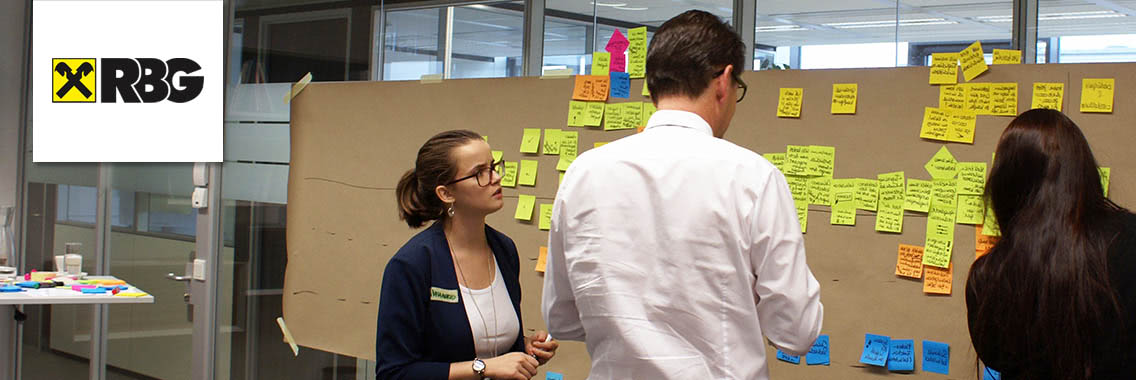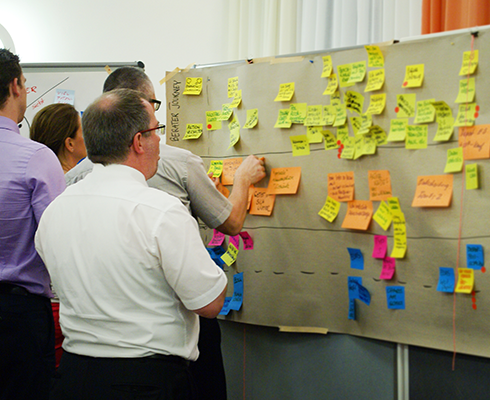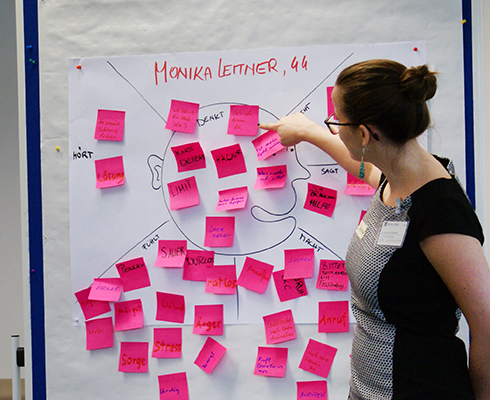
Customery Journey Mapping for Raiffeisen
The Raiffeisen Banking Group takes clear steps within Customer Journey Mapping Workshops for goal-oriented improvement of existing service-processes as well as developing new services for customers and employees.
Composition of various target-experiences for the Raiffeisen customer world
The aim of the Customer Experience Workshops was to plan and compose target-experiences within the Raiffeisen customer world and its connection with an overall service portfolio.
Through this Customer Journey Mapping, Raiffeisen was able to acquire a consistent understanding within the company for the various processes on the customers’ side and establish this understanding companywide. Next to building customer journeys, another focus was to develop consultant journeys, to establish the company to evaluate and improve consulting processes to the needs of the consultants.
Laying the foundation for innovative services and products with Customer Journey Mapping
Building on Personas and user stories, more than 20 customer- and consultant journeys have been developed in the workshops together with the client. In each workshop employees of Raiffeisen from various departments participated (management, product management, marketing, customer service, specialists,…), hence a broad pool of know-how and experience was given.
Process of the Customer Journey Workshop
With the method of Empathy Mapping, essential factors could be identified to help the company understanding the current customer-situation and their motivation. These factors have been identified for the relevant Persona and were then visualised. This helped to gain a homogeneous view of the clients and to understand their needs.
Afterwards customer journeys and -experiences were developed. An essential aspect of the journey mapping process is, to display various points of view onto the customer journeys. This includes the documentation of the steps of the customer, as well as the corresponding activities of the responsible Raiffeisen employee (e.g. consultant, customer service) within the journey. Then for any „moment of truth“ of the customer journey, a correlation of customer insights were found to illustrate the customer’s needs.
Bottom-up, pain-points and pleasure-moments were developed, which were very relevant in the service development later on. In the end, concrete innovations and solutions could be deduced for the pain points and pleasure moments.
Combined understanding via Customer Journeys
This way, a combined understanding of the processes and products within every workshop group could be gained, which was essential for a successful implementation of the planned concepts. The results of the workshops were digitalised for later evaluation, which made the implementation of the concepts easier.


Services
- Methodological planning and preperation of the Customer Journey Workshops
- Moderation and execution of the Customer Journey Workshops
- Professional support in the digital processing and documentation of the Customer Journeys
Impressions

